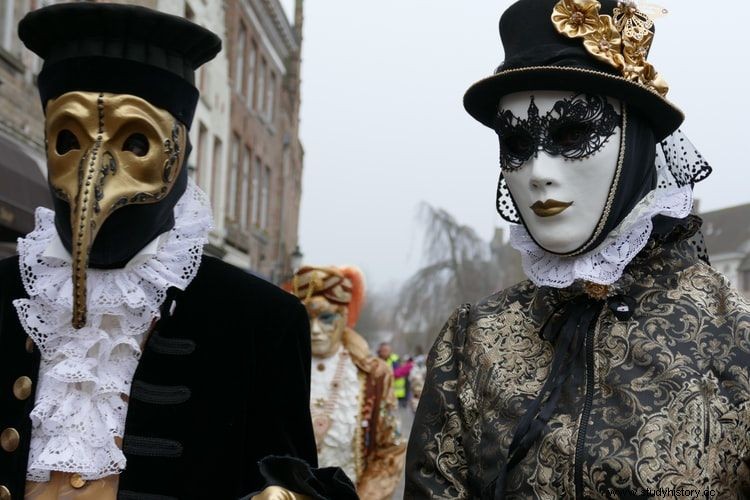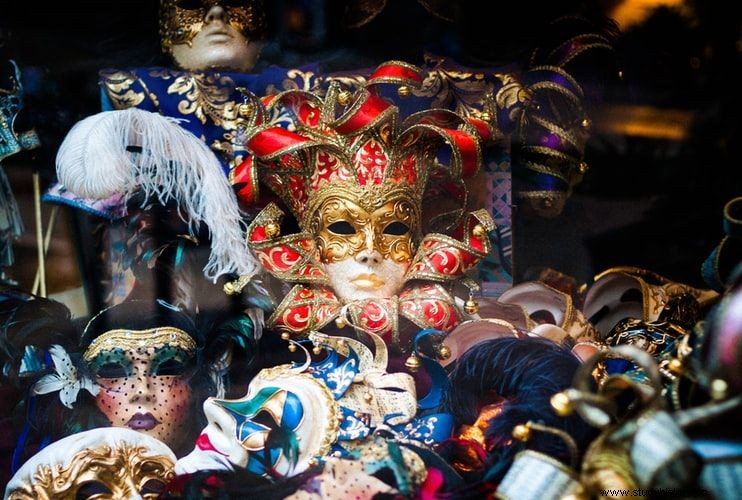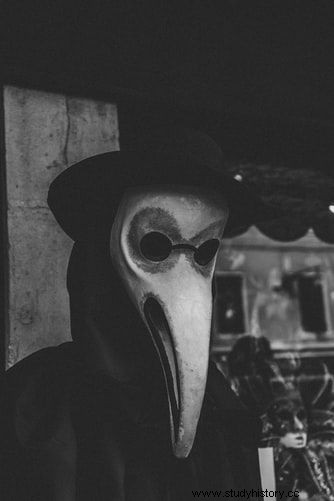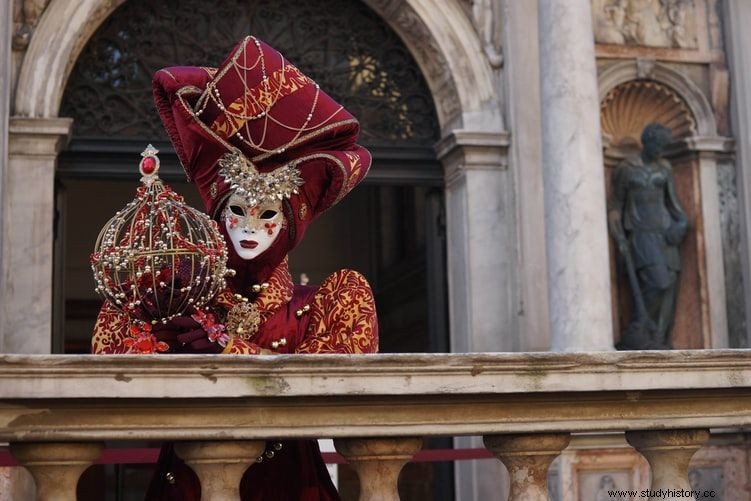strong> The Italian city on the water, perhaps one of the most beautiful in all of Europe, becomes the center of true entertainment once a year. The Venetian carnival is an extraordinary time in which unusual customs are also recorded. Because under the theatrical masks there are real secrets related to, among other things, a deadly epidemic.
Preparation for the new, or the genesis of the carnival
Carnival is a period of winter balls, parades, unusual parades, elegant masquerades, when every person, regardless of marital status, profession, output or character, can become ... someone else. Most often, the carnival begins on Epiphany and ends the day before Ash Wednesday. Lent is preceded by great fun, during which people can forget about the rules.
However, the name itself is interesting, because carnival is associated - which is quite obvious - with the Italian word carnevale. Referring to Latin sources, we learn in turn that the term carnem levāre means "to remove meat" . The same is true of caro, vale, or simply "goodbye meat". All this is associated with a specific preparation time for fasting, i.e. penance. Mortal souls, however, were put to real trials, because there was no shortage of sinful enjoyment in the carnival.

Masks gave people a guarantee of anonymity and eliminated social differences. Just for one night.
Masks guarantee a new identity
A time of fun, loss, detachment from what is prosaic and down-to-earth. It is like that today, it was like that in the past. Carnival - after all marked by colorful masquerades - was the perfect opportunity to gain a new identity. Especially in a place like Venice, a city where social divisions have been extremely vivid for centuries, masks were a symbol of anonymity. Just for one night, and sometimes even for several days…
We can associate the masquerade with the commedia dell'arte. It is by this concept that we understand folk comedy - a special kind of comedy, the source of which is the Italy of the first half of the 16th century. An unusual form of entertainment entwined with art derives from the tradition of an ancient mime, Roman pantomime and clown shows of medieval histrions , itinerant actors who acted out everyday satires without words - but with the help of spontaneous gestures. Masks were a kind of guarantor of a new identity. People played the role of court ladies, princes, thugs, pirates, magicians ...

Venetian masks ignite the imagination to this day
During the carnival madness, so-called Colombins appeared - half-masks covering only the eyes, nose and upper cheeks. The material decorated with gold, silver, feathers and crystals made a truly fanciful combination. There were also Volto (in Italian a word meaning simply a face) or Larva (Latin for ghost), people with a mask made of white porcelain or thick plastic. It is also known as the Citizen Mask because it was used by ordinary people on all holidays, including Saint Mark's Day. Harlequin, a jester character, in love, who often gets into trouble, but with no difficulty, thanks to his cunning, gets out of trouble.
Black Death Doctor
The most characteristic of all creations, however, is terrifying. Especially when we find out what events are the source of its creation. And that is the plague, the plague, or the black death . Extremely acute infectious disease, transmitted by rodents, primarily rats, and which can be infected by other mammals, including humans, as our ancestors found out acutely. Especially in the mid-6th century, when the Justinian plague was raging, an epidemic that at its peak was killing up to five thousand people in Constantinople - and only in a single day.
The plague that decimated the European continent in the mid-fourteenth century was also unique and tragic. According to conservative estimates, the population in some areas has decreased by up to 80%. Special medics, who could not be distinguished from other mortals, tried to remedy the progressive massacre. The characteristic signs were masks with huge bird beaks. We call it today as Medico Della Peste, which simply means the plague doctor. The scholars were armed not only with knowledge but also with special armor.

The plague-era doctor's outfit inspired the carnival mask
Because the unusual bird's beak was filled with various herbs, medicinal flowers, and rare spices that were supposed to prevent the spread of the disease. The plague doctors also wore long black coats and a hat, and the complete set consisted of white gloves and a cane that allowed them to inspect the sick without physical contact. Such an outfit could inspire hope, but also despair. The black plague doctors were considered to be emissaries of death.
The ball of lights, sinful nights and the flight of an angel
Venice is associated with Renaissance beauty, European heritage, which - perhaps - is doomed to total destruction. The water city can become Atlantis. However, the carnival madness, which symbolizes great joy, even love and a desire to live, has left a permanent mark on our culture. Because the tradition of the Venetian carnival dates back to 1000 years, which makes it clear that it is not only the largest, but also probably the oldest street party in Europe. Particular fun flourished during the Renaissance to be the longest lasting carnival in the world. In the 18th century, it started even in October.

The Venetian Carnival was only reintroduced in 1979
The play provoked us to sin as well. No wonder, since the masks guaranteed anonymity. The wearing of disguises was used to conceal their gender and misdemeanors, as evidenced, for example, by a special decree in 1603, which forbade men to dress up as women and visit nuns in female monasteries. There were robberies, thefts and rapes. Uncontrolled entertainment can evolve into truly dangerous forces. Gradually, ever greater penalties and prohibitions were imposed - not only financial, but also related to the expulsion from the Venetian paradise. The greatest restrictions came with the power of the Austrian monarchy after the fall of the Venetian Republic. The conquest of the city by Napoleon in 1797 meant the real end of the carnival. Bonaparte, fearing the rebellion, forbade its celebrations.
The Venetian Carnival was not reintroduced until 1979. It begins with an extraordinary event - the flight of an angel. One of the disguised figures, symbolizing an angel, descends - using a special rope - straight from the bell tower in St. The brand right in the middle of the beginning of the fun ... It cannot be denied that this is an extraordinary time, in which unusual customs were also recorded. Because under the theatrical masks there are real secrets related to, inter alia, the deadly epidemic, but also other characters from the comedy dell'arte. In Italy, art really intertwines with life.
Bibliography:
- Peter Ackroyd, Venice. Biography , Zysk i S-ka 2015,
- Wojciech Dudzik, Carnivals in culture, Sic! 2005,
- Wojciech Dudzik, Carnival. Sociological and anthropological studies , Publishing House of the University of Warsaw 2011.
